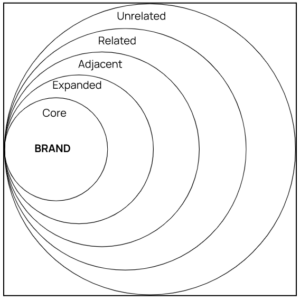The economy is shaky. Inflation is looming. A recession in late 2023 is a real possibility. Like the CEOs of the largest global companies, we’re concerned but not panicked. We’ve seen this movie before. And we have a few thoughts on how to keep the doom and gloom at bay.
Don’t abandon ship.
This one’s a no-brainer. Brand-building has an outsized impact during uncertain times because people need brands that speak to their emotions. They need companions on the journey ahead. It doesn’t feel good when your companion goes quiet during tough times, and the same follows for your brand. Now is a unique time to solidify your stance in the world vis-a-vis other companies and deepen connections with your most important audiences. If you keep building your brand, you’ll emerge from the downturn in a stronger position. Presence and consistency are more critical now than ever.
Kantar (formerly Millward Brown) has been tracking the Top 100 Brands for many years and continues to proclaim that the brands that never stop investing, even during tough times, outperform the growth of their peers and the market as a whole, including the S&P 500 and MSCI World Index. One of our clients, Analytic Partners, recently published their own study that echoes the advantage of brand investment vs. performance marketing. It’s hard to argue with the facts.
Bring your friends closer.
Attracting and acquiring new customers is a primary focus of every business’ growth strategy. And yet, the fuel it takes to do so — the energy and economic investment — is at odds with a belt-tightening, mindset. Don’t fight the instinct. Instead of spreading fewer resources across customer retention AND acquisition efforts, focus on retention. Nurture nascent relationships and solidify your longer-term ones. This is the most effective way to increase ROI and shore up the revenue that will give your business the continuity it needs. Don’t let competitors slip between you and your current customers while you’re busy trying to make inroads with new prospects. Customer success and CRM efforts should become your top priorities.
Investigate your brand’s permission.
Here’s a tactic for the more sophisticated marketer. If you agree that one of the best ways to weather the storm is by focusing on current customers, you may want to consider tangible ways to provide more value. A really interesting way into this is by looking at how your brand can expand its presence in your customers’ minds (and lives) to provide adjacent or even semi-related products or experiences. Figuring out how far out from your core capabilities you can venture requires making an honest assessment of the ‘permission’ you either already have or can quickly earn to expand and deepen your relationship.

Figure: Capabilities sphere: How much permission do you have to venture from Core?
A brand permission assessment usually allows a brand to venture into new territories. Think about Starbucks’ brand journey. From its ‘humble’ beginnings as a place to enjoy gourmet coffee outside the home, to a music hub, a gathering spot, a full-blown coffee, and food experience, to a purveyor of bean blends in retail and franchise ‘store’ experiences at hotels and entertainment venues. They expanded over time, equally asking and taking permission from their customers to play a larger role in their lives. It worked.
In some cases, an honest brand permission assessment tells a brand where NOT to go in order to maintain brand integrity. Patagonia, the outdoor apparel and equipment giant has always been guided by its mission statement “We’re in business to save our home planet.” As they assumed more authority and credence with their customers (led by their remarkable founder Yvon Chouinard), this actually led them to dial back from certain activities. In 2019, the brand instituted a mandate to work only with companies aligned with their mission and promptly put a kibosh on allowing just any company to co-brand their ubiquitous vests. Call it negative brand permission, but it’s all in the sphere of knowing where a brand can and should operate, and staying true to that.
At Emotive, in a bid to deepen our relationships with our clients, we are (re)assessing our own brand’s permission and have developed some interesting new offerings that align with the role a brand can play during these changing times. If you’re ready to explore your brand’s permission, give us a holler. We’d love to dig in.





